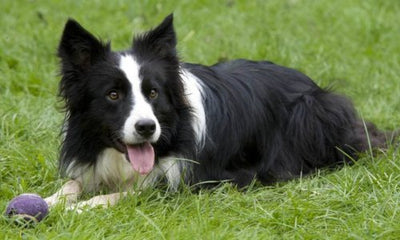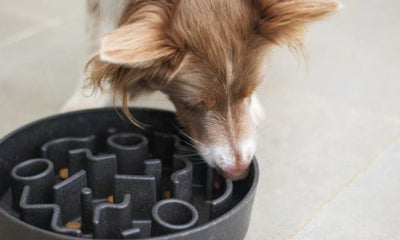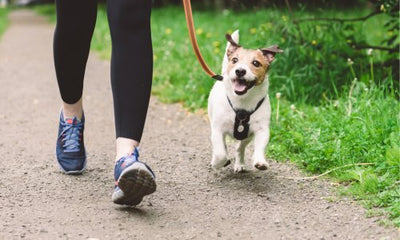Owning a horse
Owning a horse can be a rewarding and enjoyable experience. Horses make wonderful companions, and can be kept for recreational or pleasure riding, to enter competitions or as a pet. Before purchasing a horse, it is important to remember that horse ownership is a long-term commitment that requires significant time, effort and money.
If you are considering purchasing a horse, we recommend asking yourself the following questions first:
- Can I provide my horse with all the basic health and welfare requirements to keep him or her happy and healthy?
- Do I have the time required to look after the horse and visit him or her at least once a day?
- Do I have enough money to care for the horse, including any unexpected veterinary costs?
- Do I have a suitable property to keep the horse?
If you answered yes to all these questions, it sounds like you could be ready to be a horse owner! When you buy a horse, we recommend arranging an examination of the horse where your veterinarian is present. This will ensure you don’t buy a horse that is unhealthy, lame or unsuitable. It can also be a good idea to agree on a trial period with the old owner, to ensure the horse is suitable for you.
Paddock or agistment property
In the likely case that you do not have enough room to keep your horse in your backyard, you must find a suitable place to agist your horse. You should take time to research agistment options, such as boarding stables where you pay to keep the horse on their land and use their facilities. It is a legal requirement that the property that your horse is kept has a Property Identification Code (PIC). If you are living in the Illawarra area, Darkes Forest is a great option for horse agistment or horse boarding.
Horses like to run around and need a lot of space, so you must find a suitable place that has adequate food, water access, shelter and space for exercise. You should also choose somewhere close enough for you to visit daily. The paddock should be atleast one acre, properly fenced and be free from debris and rubbish. It is very important to pay close attention to the quality of the fencing to prevent injury or escape. It is also important that there is some form of shelter from sun, wind and rain such as trees, a walk in shed or stable. A stable or confined area can be helpful in the event your horse gets sick or injured and needs to be confined under the directions of a veterinarian. One last thing to note is that horses are herd animals and enjoy the company of other horses whether it be in the same paddock or a neighbouring paddock, so we highly recommend finding your horse a buddy!
Feeding
It is your responsibility to ensure your horse has a well balanced and healthy diet that meets the needs of their lifestyle and physical characteristics. Roughage, in the form of grass or good quality hay should form the majority of the horse's diet. Horses can spend up to 15 hours a day grazing, and all horses should have access to adequate amounts of good quality grass to keep in condition. Horses are designed to be able to eat and digest grass easily, and extract the nutrients and sugars that grass produces. In the event that grass is limited, you should offer your horse hay, which is grass that has been dried, baled and stored. Hay provides many of the same natural sugars and nutrients that grass does, and can be fed in large quantities.
If your horse is in regular work, or there is not enough grass in the paddock, you may need to add supplementary food to their diet. Good quality lucerne, oaten or wheaten chaff can be a cost effective way to add extra calories to your horse's diet. Grain can be used to add extra sugars and nutrients to the diet, and help horses maintain weight and condition especially if they are in regular work. The type of food and how much will depend on your horse's size, weight and workload. It is important to note that grain should not be the main aspect of their diet as this can lead to obesity and hoof problems. If you think your horse needs grain in their diet, we highly recommend speaking to your veterinarian.
Horses have sensitive digestive systems so you should always feed good quality food, keep a regular feeding routine and make any changes very gradually. You may like to give your horse a carrot or apple as a treat. This should be done in moderation, and ensure they are sliced in a way that they will not cause choking.
Water
Your horse must have constant access to clean, fresh water. Horses are large animals and can drink up to 40 L per day in hot weather, so a dam or automatic waterer is ideal for water supply. Buckets are not suitable as they can be tipped over easily. Bath tubs are another great option, but these must be checked and refilled daily.
Worming and vaccinations
You must protect your horse from common parasites such as bots, lice, worms and ticks. You should worm your horse regularly with an effective, broad spectrum wormer to prevent any build up of worms in the stomach or intestines. Most worming paste requires dosage every 6-8 weeks, but always follow instructions on the label. In addition to worming, you need to vaccinate your horse to prevent them from various deadly diseases and illnesses such as tetanus and strangles. Equivac 2 in 1 is a popular choice to protect your horse against both tetanus and strangles. Your veterinarian will be able to advise you on what your horse should be vaccinated for and how often. We also recommend you check your horse over for ticks regularly.
Health and supplements
It is important to monitor your horse’s body condition and weight regularly. Laminitis is a common condition amongst horses and ponies, and is often caused by obesity or too much green pasture. Laminitis can have severe effects on your horse, therefore it is very important not to let your horse get too overweight.
Most horses require a basic vitamin and mineral supplement to ensure they are getting all the nutrients they need. At the very least, you should provide them with a salt and mineral lick in their stable or paddock to provide daily mineral requirements for optimal health and vitality. Supplements can be added to your horse's diet to improve their overall health and wellbeing. This can be particularly useful for older horses and horses in competition. There are a range of supplements available for different purposes, for example Biotin is available to strengthen your horses hooves, while Vitamin B will help calm your horse down. If you notice an area your horse is lacking, you should consult a nutritionist or veterinarian to find out what supplement is right for your horse.
Hoof care
Horses' hooves need to be trimmed every 6-8 weeks by a professional farrier. This prevents them from chipping or becoming too long or uncomfortable. When horse hooves get too long, it can affect balance and weight distribution which can cause further health problems. In addition, if you are riding your horse on hard surfaces, you will require a farrier to put shoes on them, and change these shoes every 4-6 weeks.
Teeth care
Adult horse teeth need to be checked by a trained and competent equine dentist once a year. Horses under the age of 5 should have their teeth checked every 3-6 months. Horses' teeth are constantly growing and changing, and unchecked teeth can become sharp, causing pain and mouth injuries. When a horse chews, their teeth wear down and the edges of the teeth can form sharp points which can cause lacerations. The equine dentist will file down these sharp edges, reducing the risk of any mouth injuries. If you notice irregular chewing, excess salivation or swelling in the face, you should contact your vet.
Veterinary
If your horse appears lame, uncomfortable, restless or is lying down or rolling frequently, you should consult a veterinarian immediately. It is important to have a reliable local veterinarian that you trust and call upon incase of emergencies. In addition, we highly recommend having a First Aid Kit on hand at your horse stable or agistment property, incase of any small paddock injuries. You should also have a halter and lead to be able to easily catch your horse and tie them up, not only for veterinary visits but also for grooming, bathing and tacking up.
Exercise
Horses are naturally very active and need lots of exercise. Exercise helps horses maintain weight, build muscle and improve circulation. Grazing is a great way to encourage your horse to run, play and get their energy out. Riding is also a great way to exercise your horse. There are many different disciplines and activities you can do to make it a fun and challenging workout. If you have little or no experience in riding horses, you should seek professional lessons from a riding instructor or join a pony or adult horse club. This will help you to learn to ride properly and how to handle horses. They will also be able to advise you on properly fitting riding equipment to ensure your safety and prevent injury to the horse.
Grooming
Grooming is part of routine horse care and should be done regularly. To groom your horse, you should purchase a good quality brush and brush in the direction of the hair growth to remove mud and dust. You should also brush their mane and tail with a mane and tail brush, and use a coarser brush such as a rubber curry comb to help shed their winter coat. Finally, you should use a hoof pick to remove dirt and stones from their feet. Grooming is not only a good opportunity to check over for injuries but also an invaluable time to bond with your horse and ensure they are kept in good condition. If you are riding your horse, you should wash them afterwards to remove any sweat. You might like to use a horse conditioner to clean the coat thoroughly. Don’t forget to dry them with a sweat scraper so they don't get cold.
Rug
Many people use a horse rug in winter to protect their horse from the cold, wind and rain. While this is not mandatory, it is a great idea to protect your horse from the elements. If you are competing in showing, rugging is also a great way to reduce the growth of their winter coat to keep them looking in top shape. If you choose to use a rug, be sure to check it daily to make sure it is not rubbing or leaking.
We hope this guide helps give you an understanding of the basic needs of a horse. All information in our care guides are based upon our own experience, and in any medical situations, you should always consult your vet.
Horse Owners Checklist
- Horse Food
- Automatic waterer or large water container
- Feed buckets
- Halter
- Lead Rope
- Grooming Kit
- Equine First Aid Kit
- Hay net
- Horse rug
- Riding equipment
- Horse shampoo
- Sponge
- Scraper
- Fly Spray
- Fly mask






